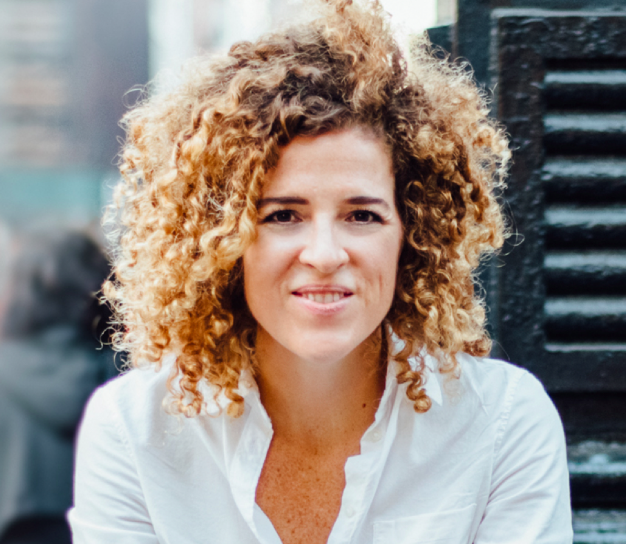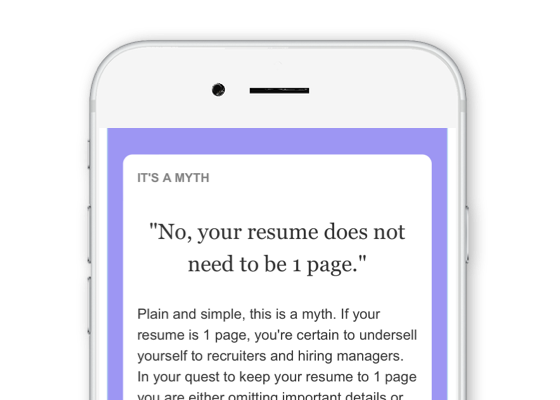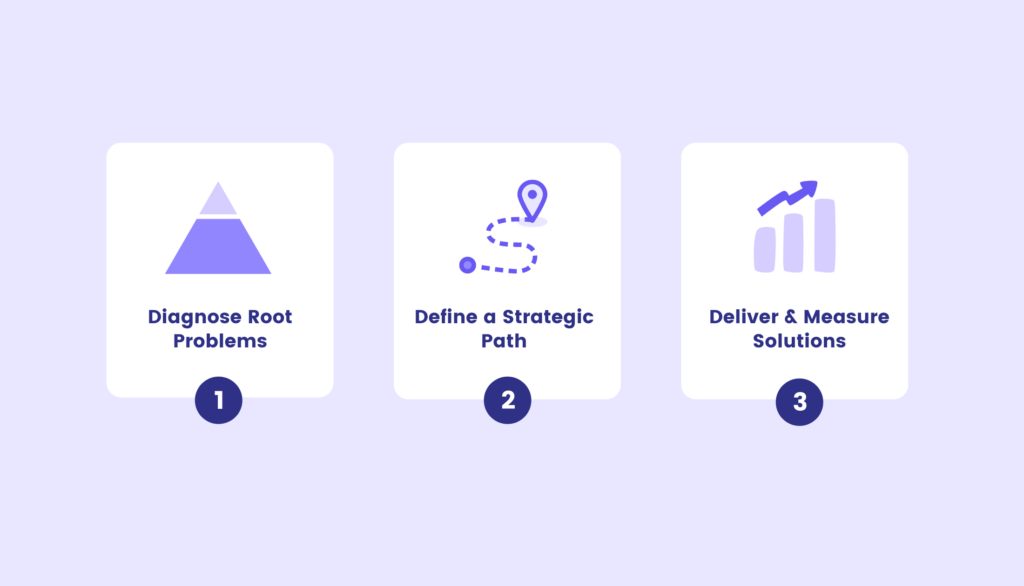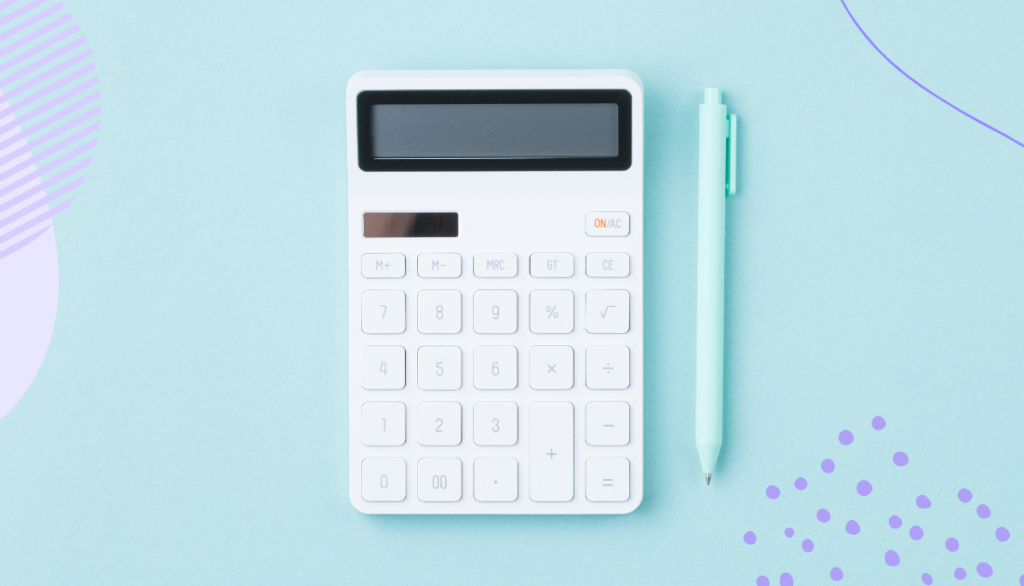13 min read
How to ask someone to review your UX portfolio and what you can do to get helpful feedback
12 min read
12 min read

Doing user research is a crucial step in the UX process. When it comes to your UX portfolio, this is even more important. Chances are you’ve been staring at your UX portfolio for too long. You need UX portfolio feedback … input from someone who’s more objective and maybe a bit less emotionally attached than you are.
There’s a right way and a wrong way to ask someone for feedback about your UX portfolio. The quality of the UX portfolio feedback you get is dependent on how much planning and thought you put into who you ask and what you ask them. Learn exactly how to get effective feedback for your UX portfolio in the steps outlined in this article.
Ask for feedback about your portfolio before you apply for a job
Creating your UX portfolio is a lot like creating a product. When creating a product, we know that the surest way to create something people do not want is to skip research. Failing to gather feedback until after you launch will likely result in a lot of false assumptions, unnecessary features, missing features, and many time-consuming post-launch changes.
However, product teams who invest in gathering user feedback during product development, are more likely to launch a product with a higher chance of success because they gathered feedback along the way and used research insights to shape the product as they were creating it.
Before and while I was creating my program, Career Strategy Lab I spent hundreds of hours doing research. I wanted to understand the problems UX professionals face when it comes to creating a UX portfolio, navigating the job search, and preparing for interviews. One blinding insight was that too many UX professionals do not apply the UX process when they write their case studies and create their portfolios.
How can you create an effective UX portfolio if you skip the basics—steps that you wouldn’t skip if you were working on someone else’s problem? You are not the user of your UX portfolio. Proactively seeking frequent and strategic feedback will help ensure you don’t get too inside your own head, overthink or forget things, and create something that doesn’t stand out to recruiters and hiring managers.
In this article, we’ll discuss:
- Finding the right people to give you feedback
- Identifying the most helpful questions to ask
- Applying common user research interview techniques and strategies to your UX portfolio reviews
Featured Resource
Get the UX Case Study template for Google Docs and ensure sure your case study covers all the details UX recruiters look for.
Define objectives for your UX portfolio feedback
When conducting research, the quality of the insights you glean is a direct result of the quality of the questions you ask. The entire research process is much easier when you have specific objectives, both for UX projects and for your UX portfolio, for two reasons
- Clear objectives mean more specific criteria for interview subjects.
- Well-defined objectives will help you write more specific questions and topics to address for your research sessions.
Before you ask for feedback about your UX portfolio you need to have a clear objective—and it cannot be “see what people think of my portfolio.”
Examples of specific objectives are:
- Are my skills and what I do (and don’t do) as a UX professional clear?
- Do the projects in my portfolio provide evidence that I have the skills I say I have?
- For each project, is the process clear and easy to follow?
- Are the layouts and visual presentation easy for someone to skim/scan if they were quickly going through the portfolio?
Who to ask for feedback about your UX portfolio
Chances are that you’ve asked someone for feedback in the past and one of two things happened:
- They didn’t respond to you.
- They gave you surface-level feedback along the lines of “Looks good to me” or “Great job.”
In both of these scenarios, you’re left without productive insights or feedback—often because the person you asked, and the way you phrased your questions, didn’t invite strong feedback. When considering who to ask for feedback about your UX portfolio, be mindful of who you ask and the type of feedback they might be suited to provide.
For example, don’t expect to get quality feedback from your mom or roommate because more than likely, they do not work in UX—and even if they did work in UX, they are too close to you. They may not give you the blunt and honest feedback you need because they care about you too much and might be inclined to see your portfolio through rose-colored glasses.
So where can you find people to give you feedback for your UX portfolio? Here’s a list of ideas to help get you started as:
- Former or current colleagues.
- HR person or recruiter who focuses on UX.
- Members of groups you belong to online
- Members of in-person meetups
- Former classmates from a UX course, workshop, or program.
- People you are friendly with on Twitter, LinkedIn, or other platforms.
This is why it’s crucial that you develop your professional UX network, so you have trusted peers you can ask to review your portfolio, critique your resume, or just seek out general career advice.
Of course, it should go without saying that if you cold-email people with whom you’ve never had contact with, there’s a low chance they’ll reply. Focus your efforts on people you have some type of relationship with or connection to.
Choose people who can give you feedback on three components of your UX portfolio:
- Content: Someone with writing experience will be able to give you feedback on what you’ve written about each project. They will be able to help you identify where details are excessive, lacking, or where you’ve failed to explain your process and the “why.”
- Visual design: Someone with visual design experience will be able to give you feedback on your portfolio’s readability and tips to make sure the layouts, white space, font styles, etc support the message in your content.
- UX skills and experience: Someone with knowledge of UX and product development will be able to determine if the projects in your portfolio, and what you’ve written for each, provide evidence of the skills you say you have.
Before you ask someone to review your portfolio, ask yourself a few questions:
- How is this person “qualified” to review my portfolio? This will help you avoid asking your cousin, Jennifer, who doesn’t have a “design eye” and has to visit the Apple Genius bar once a month for her latest tech problem.
- What component do I think they should focus on? This will help ensure that you don’t forget to get feedback about a certain part of your portfolio. It’s great if 3 people proofread your portfolio, but if you didn’t get feedback about the visual presentation, you could risk that the content is not readable for the user of your UX portfolio.
- “How well do I know this person?” This will help ensure you don’t waste time asking people to review your portfolio who, in reality, may never respond. Also, consider how busy that person if. If you send a LinkedIn or Twitter message to a prominent person in the UX industry to review your portfolio, there’s a low chance they will. Not because they don’t want it, because they are busy and have a ton going on! Try to ask people who know you and with whom you have a bit of history.
Setting up the logistics of a UX portfolio review
Before you ask someone for feedback about your UX portfolio, you have to consider how you’ll ask them. These are the three ways someone can give feedback about your portfolio:
- In-person review: Where you literally sit beside them in person and moderate (or not) the session.
- Remote recorded review: Provide the person with a task outline and questions and have them record themselves using a software, such as Loom, so you can record their screen and video of their face/voice.
- Review with questions to answer via email: Provide the person with a set of specific questions to answer so that you don’t receive vague feedback like “looks good to me.”
As with any research, I believe it’s best to get someone to review your portfolio in-person. Consider this a sort of usability test for your portfolio. You will gain a tremendous amount of insight from seeing, in front of your eyes, how fast someone goes through your portfolio, where they stop and start, their facial reactions and any questions they may ask.
Regardless of how you solicit the feedback, it’s important that you provide context and remind people that you are open to their honest and unfiltered feedback.
- Set the stage and provide context. If you are applying for a specific role, provide that context and tell the person, “Imagine I’m applying for the role of ________ at company ____________.” You could even mention a few of the important skills listed in the job description, or have the person read the job description. This helps the person gauge whether or not your portfolio seems to show evidence of the skills the company is looking for.
- Make it known that you want honest feedback. As with any research session, it’s important to encourage people to be as honest and vocal as possible. Regardless of whether the session is recorded or questions by email, let the person know you want their non-filtered feedback. “I’m asking you for feedback because I value your opinion. Please be as honest as possible, I won’t take your feedback personally and I realize this is the best way to improve my portfolio and chances of standing out.”
Questions to ask someone about your UX portfolio
When someone agrees to review your portfolio, you must create a discussion guide or list of questions to use. Regardless of how the portfolio review happens, you will need to customize the questions for each person, as some people you ask may be more qualified to give you feedback about the content, visual design, etc.
Here are some questions you could use in your discussion guide for your own UX portfolio review. Mix, match, and rephrase these into your own words depending on who you’re asking and the role you’re applying for.
Skills and experience
- Based on the “About” section of my portfolio, is it clear what type of UX professional I am?
- Could you easily identify what I do in UX and also what I may not do?
- If you had to introduce me at an event, what would you say I do in UX?
Content and design
- Do the projects I selected showcase the skills I say I have?
- Is the first project in my portfolio is the strongest?
- Did each project have a focus area (eg. mobile, research, prototype, interface) or did they all feel the same?
- Did the portfolio feel too long?
- Was it easy to read or scan?
For each project
- Does the title of the project give a glimpse of what the project is about?
- Do you understand what the company does?
- Did you quickly understand my role and/or team for the project?
- Was the problem to be solved clear?
- Was the timeline and process clear?
- Did you understand who the users of the product were and how the project fit into their life?
- Did I explain and document the process?
- Could you see how the solution or process addressed the original problem at hand?
- Were the visuals clear and easy to decipher?
- Did each project have a clear conclusion, learnings, or outcome?
After the review
- Would you hire me for the role of (role name) based on this portfolio? Why?
- Based on my UX portfolio, how would you describe me as a UX professional?
- What’s one thing that really stood out about my portfolio?
- What changes would you recommend I make?
- If you were hiring, what position do you think I would be most suited for?
Creating a UX portfolio you are proud of is an excellent chance to also push yourself as a UX professional. If you don’t normally do research, you can practice doing usability testing on your portfolio. Or if you’re not a visual designer, you can learn about visual design principles to ensure your portfolio has a proper balance of text, images, hierarchy, and more.
To create an effective UX portfolio, you must also apply the UX process to it. Failing to gather feedback until after your UX interviews will result in costly (in both time and emotional effort) changes to your portfolio later.
Of course, seeking feedback about your skills and experience does force you to be vulnerable and possibly hear things you don’t want to hear! However, an important quality of a successful professional in any field is to always remain teachable.
Your UX portfolio is never really “done” so make a point to have someone review your portfolio at least once a year (or as often as you change it)! You never know when an unexpected job opportunity may come your way. By working on your UX portfolio proactively, you’ll avoid making costly mistakes if you rush to finish it later.









